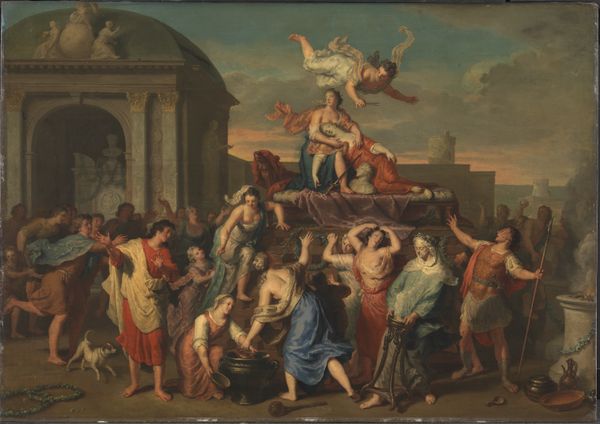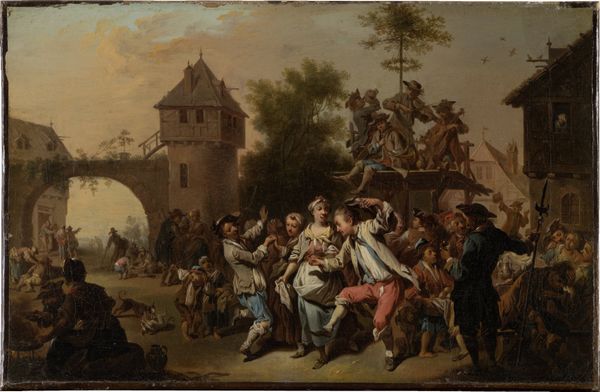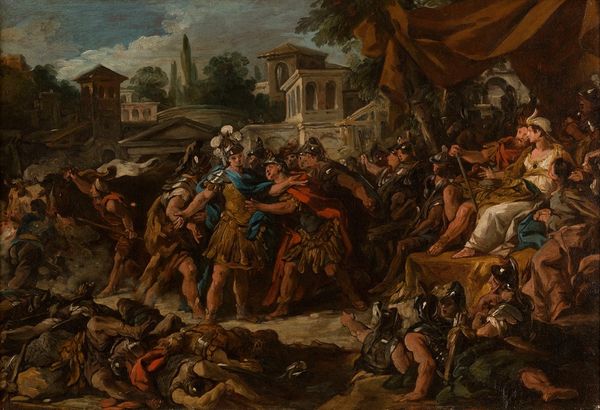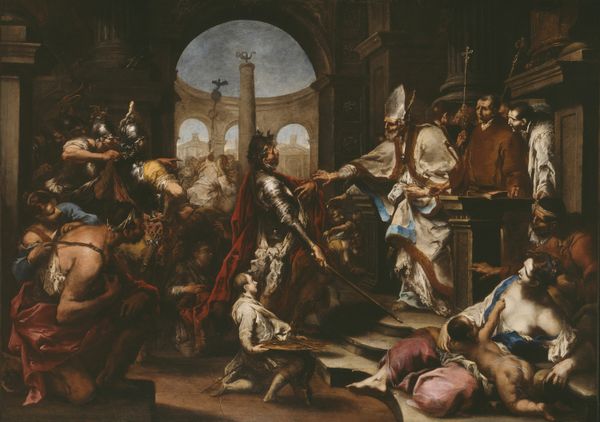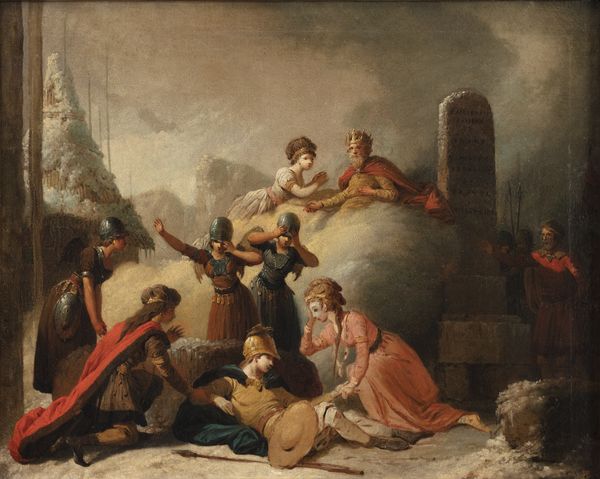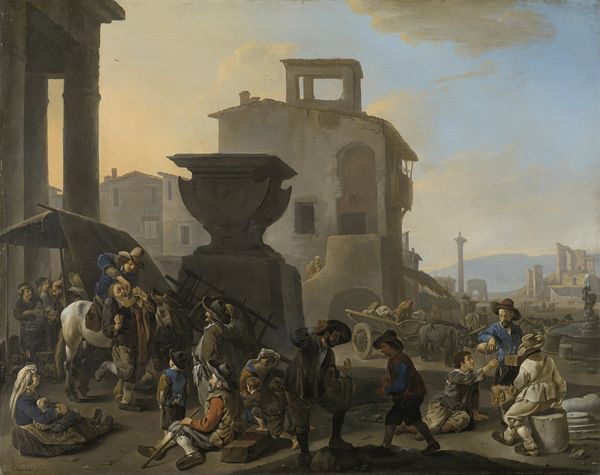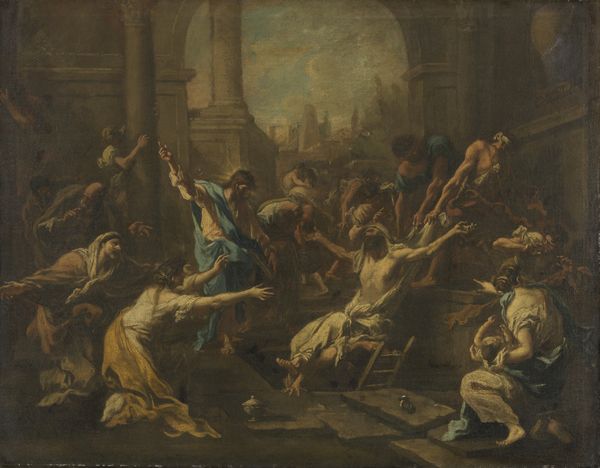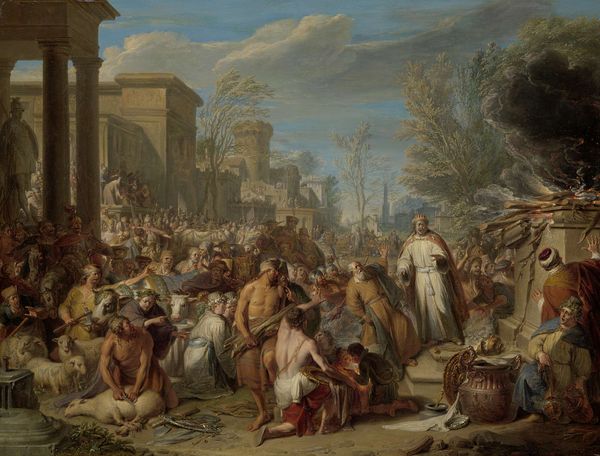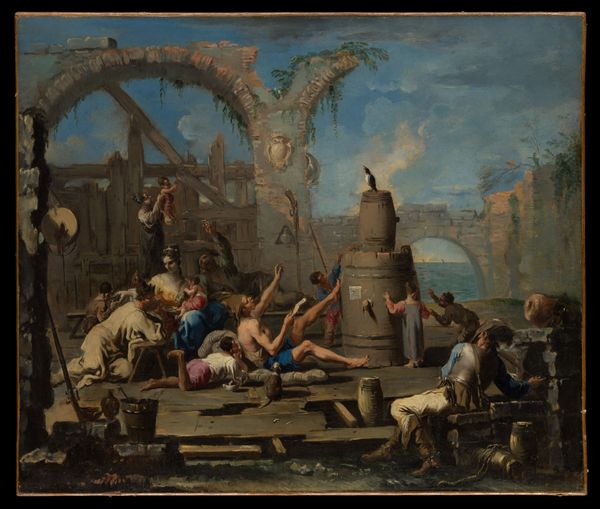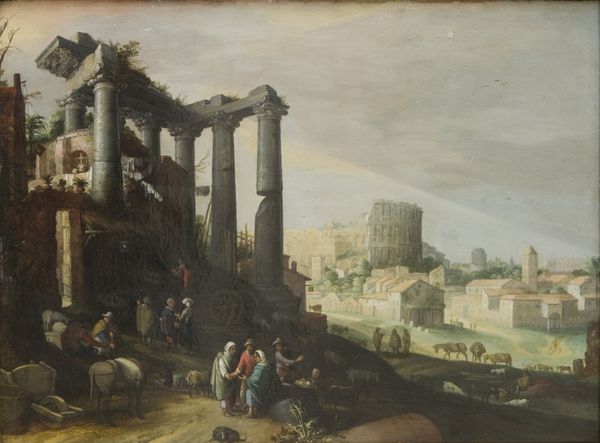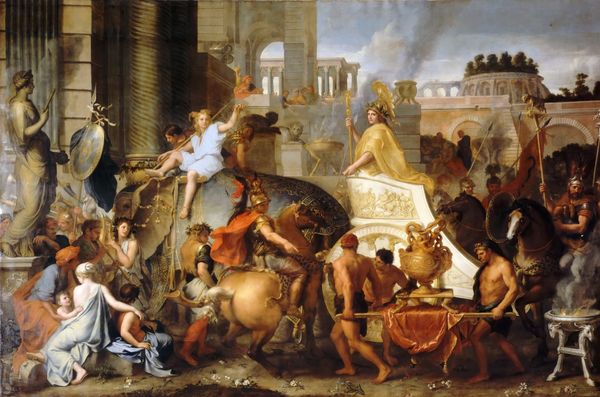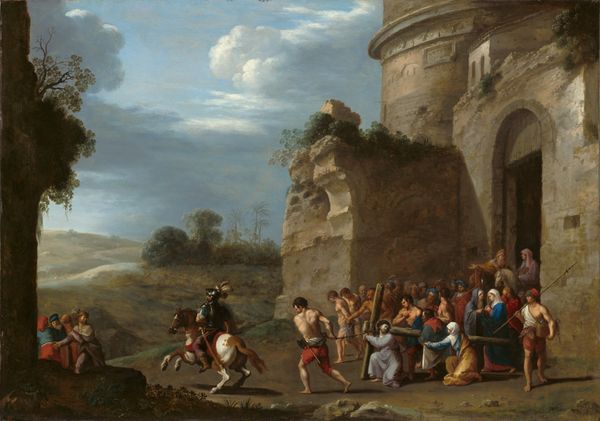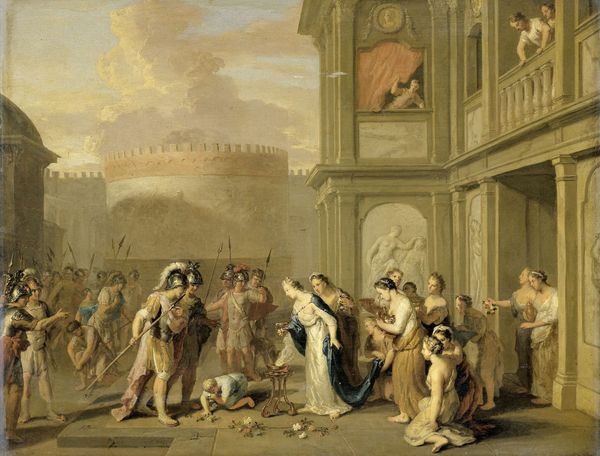
painting, oil-paint
#
narrative-art
#
baroque
#
painting
#
oil-paint
#
landscape
#
figuration
#
14_17th-century
#
cityscape
#
history-painting
#
academic-art
#
realism
Dimensions: 87.4 x 102.5 cm
Copyright: Public Domain
Bartholomeus Breenbergh painted "The Martyrdom of Saint Lawrence" in the 17th century, using oil on canvas to depict a potent intersection of religious devotion and imperial power. Set against the backdrop of ancient Rome, the scene illustrates the execution of Saint Lawrence, a Christian deacon martyred for refusing to relinquish the Church's wealth. The painting layers religious narrative onto classical architecture, highlighting the cultural tensions of Breenbergh's time. The artist grapples with the moral conflicts of faith versus empire, and we see a divergence between the saint's suffering and the city's grandeur, prompting questions about justice, piety, and the spectacle of violence. The composition invites reflection on how historical narratives shape our understanding of power, faith, and resistance. It is as much about the emotional endurance of faith as it is a commentary on the historical drama that has shaped cultural identities.
Comments
stadelmuseum about 2 years ago
⋮
Like many Dutch artists, Breenbergh was drawn to Italy at an early age; he worked in Rome for several years. The experience left its mark not only on the content, but also on the form of his paintings, even those executed back in Amsterdam from 1633 onwards. A leading Italianist, he depicted the martyrdom of Lawrence against the backdrop of the Eternal City. Trajan’s Column and the Temple of Antoninus Pius serve as reminders of antiquity, while the Castel Sant’Angelo – and above all Michelangelo’s dome of St Peter’s in the background – set the event in the artist’s own time.
Join the conversation
Join millions of artists and users on Artera today and experience the ultimate creative platform.
